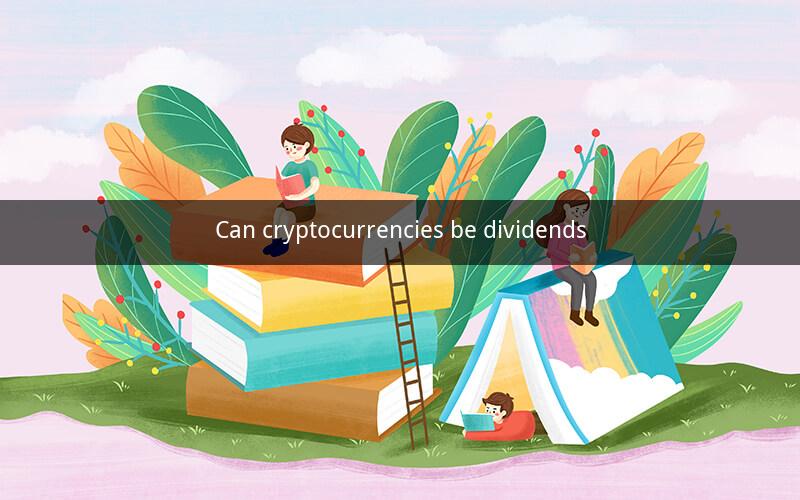
Table of Contents
1. Introduction to Cryptocurrencies
2. Understanding Dividends
3. The Concept of Dividends in Cryptocurrencies
4. Cryptocurrency Tokens and Dividends
5. Real-World Examples of Cryptocurrency Dividends
6. Challenges and Limitations
7. The Future of Cryptocurrency Dividends
8. Conclusion
1. Introduction to Cryptocurrencies
Cryptocurrencies have emerged as a revolutionary technology in the financial world. They are digital or virtual currencies that use cryptography for security. Unlike traditional fiat currencies, cryptocurrencies operate independently of a central authority, often relying on blockchain technology for their transactions.
2. Understanding Dividends
Dividends are payments made by a company to its shareholders as a distribution of profits. They are typically issued in the form of cash, additional shares of stock, or other property. Dividends are a way for companies to share their success with investors who hold shares in the company.
3. The Concept of Dividends in Cryptocurrencies
The concept of dividends in cryptocurrencies is relatively new and evolving. While traditional dividends are paid out by corporations, cryptocurrency dividends are distributed by blockchain projects to their token holders. These dividends can come in various forms, such as a portion of the project's revenue, a percentage of the tokens in circulation, or even new tokens.
4. Cryptocurrency Tokens and Dividends
Cryptocurrency tokens can be categorized into different types, each with its own characteristics. Some of the most common types of tokens that can issue dividends include:
- Utility Tokens: These tokens are used to access a product or service offered by a blockchain project. They can be dividend-paying if the project generates revenue from the product or service.
- Security Tokens: These tokens represent ownership or an investment in a company or asset. If the underlying company earns profits, it can distribute dividends to security token holders.
- Governance Tokens: These tokens give holders the right to vote on decisions made by a blockchain project. In some cases, governance tokens can also be used to receive dividends.
5. Real-World Examples of Cryptocurrency Dividends
Several blockchain projects have implemented dividend distribution systems. Here are a few examples:
- MakerDAO: This decentralized finance (DeFi) platform allows users to lend and borrow crypto assets. It distributes interest earned from lending as dividends to MKR token holders.
- Uniswap: As a decentralized exchange, Uniswap generates fees from trading activities. It has implemented a system to distribute a portion of these fees to UNI token holders.
- Chainlink: This decentralized oracle network provides real-time data to smart contracts. Chainlink token holders receive a portion of the network's revenue as dividends.
6. Challenges and Limitations
Despite the growing popularity of cryptocurrency dividends, there are several challenges and limitations to consider:
- Volatility: Cryptocurrencies are known for their high volatility, which can make dividend payments unpredictable.
- Regulatory Uncertainty: The regulatory landscape for cryptocurrencies is still evolving, which can create uncertainty around dividend distribution.
- Tax Implications: Dividends in cryptocurrencies may have different tax implications compared to traditional dividends, depending on the jurisdiction.
7. The Future of Cryptocurrency Dividends
The future of cryptocurrency dividends looks promising. As the industry matures, we can expect to see more blockchain projects implementing dividend distribution systems. This could lead to increased investor interest in cryptocurrency assets and a more diversified investment landscape.
8. Conclusion
Cryptocurrency dividends offer a unique way for blockchain projects to share their success with token holders. While there are challenges and limitations, the potential for growth and innovation in this area is significant. As the industry continues to evolve, we can expect to see more creative and efficient dividend distribution models.
---
Questions and Answers
1. Q: Can any cryptocurrency issue dividends?
A: Not all cryptocurrencies can issue dividends. Only those with a clear revenue model or profit-sharing mechanism can potentially distribute dividends.
2. Q: Are cryptocurrency dividends taxed differently from traditional dividends?
A: Yes, cryptocurrency dividends may be taxed differently depending on the jurisdiction. Some countries may treat them as capital gains, while others may consider them income.
3. Q: Can a cryptocurrency project issue dividends in its own token?
A: Yes, some projects distribute dividends in their own tokens, which can lead to an increase in the token's value over time.
4. Q: Are there any risks associated with investing in dividend-paying cryptocurrencies?
A: Yes, there are risks, including market volatility, regulatory changes, and the potential for the project to fail.
5. Q: Can a cryptocurrency project reduce its token supply to issue dividends?
A: Some projects may use a portion of their token supply to issue dividends, but this is not a common practice.
6. Q: How can investors find out if a cryptocurrency project offers dividends?
A: Investors can check the project's whitepaper, website, or official communication channels to determine if dividends are offered and how they are distributed.
7. Q: Are dividend-paying cryptocurrencies more stable than non-dividend-paying ones?
A: Dividend-paying cryptocurrencies are not necessarily more stable than non-dividend-paying ones. Stability depends on various factors, including the project's business model and market conditions.
8. Q: Can a cryptocurrency project stop issuing dividends?
A: Yes, a project can decide to stop issuing dividends if it no longer generates sufficient revenue or chooses to allocate funds differently.
9. Q: Are cryptocurrency dividends considered a reliable source of income?
A: Cryptocurrency dividends are not considered a reliable source of income due to the volatility and unpredictability of the market.
10. Q: Can dividends in cryptocurrencies be used to purchase goods and services?
A: Yes, some projects allow dividend recipients to use their dividends to purchase goods and services within the project's ecosystem.